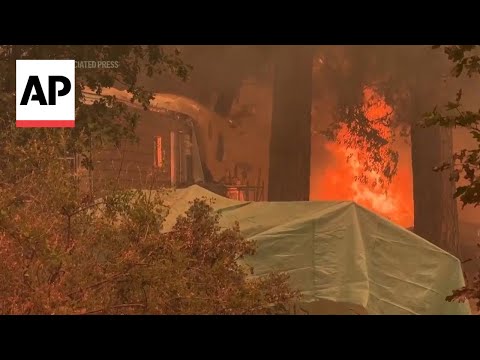(29 May 2024)
RESTRICTION SUMMARY:
ASSOCIATED PRESS
Berlin, Germany – 23 May 2024
1. Members of the Nature And Biodiversity Conservation Union, or NABU, looking at flowers with magnifying glasses
2. Close of flowers with insects on
3. NABU members looking at flowers
4. Sky seen through flowers
5. SOUNDBITE (German) Daniela Franzisi, project manager of the insect summer: ++OVERLAID BY SHOTS 1 TO 4++
“NABU’s insect summer is basically Germany’s largest insect count with the help of citizens. In other words, every summer we call on people to go out and count insects at the beginning of June and the beginning of August.”
6. Close of bee on lavender
7. Members of NABU checking the grass for insects
8. SOUNDBITE (German) Daniela Franzisi, project manager of the insect summer: ++PARTIALLY OVERLAID BY SHOTS 7, 9, 10, 11++
“We came up with the insect summer in 2018 because we think it’s great when people simply go out into nature and have fun discovering which insects are still around. So all these different habitats where you can find insects everywhere, it’s just fun to see which insects I can find there.”
9. Two-spined soft bug
10. Bee flying from flower to flower
11. Members of NABU checking the grass for insects
12. Close of plants seen with magnifying glass
13. SOUNDBITE (German) Laura Breitkreuz, expert on biodiversity and entomology: ++PARTIALLY OVERLAID ON SHOTS 14 TO 16++
“Insects are an incredibly important educational block in the ecosystem. In other words, everything is somehow connected in nature and insects are very, very important. They are of course very important for the pollination of plants. They are also an important food source for many other animals such as frogs, birds and small mammals and soil fertility.”
14. Close of ants on plant
15. Members of NABU checking the grass for insects
16. Close of sparrow
17. Members of NABU checking the grass for insects
18. Close of bumble bee
19. SOUNDBITE (German) Daniela Franzisi, project manager of the insect summer: ++OVERLAID WITH SHOTS 18, 20, 21, 22, 23, 24++
“Especially something like a garden or even a balcony, these are areas science wouldn’t normally be able to access and where not so many scientists can do a count. So that people really do go out and spend up to an hour in one place, is worth an incredible amount. And we also get the feedback, that people also enjoy it.”
20. Members of NABU checking the grass for insects
21. Close of ladybird on leaf
22. Close of soft bug on flower with red petals
23. Close of berry bug in long grass
24. Flowers with bee flying around
STORYLINE:
In a strip of greenery between Berlin’s Natural History Museum and a busy street, bumble bees flit from flower to flower, a ladybug makes its way along a leaf full of aphids and bugs crawl along plants.
Gardens, balconies, verges, fields, woods and patches of wilderness across Germany will be the scene in the coming weeks for the “insect summer” organized by the country’s Nature And Biodiversity Conservation Union, or NABU.
The environmental group has invited people to spend an hour counting the insects they see in a 10-meter radius (33-foot) radius; anyone can join in and anywhere goes.
Over time, people appear to be recognizing more insects — a key point of the citizen science project, which like others doesn’t aim to deliver precise scientific monitoring but can give researchers information on trends and unexpected insights.
Insects are an essential building block of ecosystems, crucial to pollination, food chains and to keeping the soil productive.
AP video shot by Fanny Brodersen
Find out more about AP Archive: http://www.aparchive.com/HowWeWork
Twitter: https://twitter.com/AP_Archive
Facebook: https://www.facebook.com/APArchives
Instagram: https://www.instagram.com/APNews/
You can license this story through AP Archive: http://www.aparchive.com/metadata/youtube/2bb3fc64ca3d446994e75c5283aa92d9





